Located on Victoria's far south-west coast on the Moyne River, Port Fairy has a historical charm and many preserved bluestone cottages.
The Gunditjmara Aboriginal People
The Gunditjmara Aboriginal people have lived on lands that encompassed Port Fairy for thousands of years. Evidence shows that the Gunditjmara people may also have lived in villages of stone huts and operated eel traps, which are about 6000 years old (?), to capture migrating eels for food.
The Gunditjmara Aboriginal People
The Gunditjmara Aboriginal people have lived on lands that encompassed Port Fairy for thousands of years. Evidence shows that the Gunditjmara people may also have lived in villages of stone huts and operated eel traps, which are about 6000 years old (?), to capture migrating eels for food.
Gunditj- means “belonging,” and -mara is the word for “a local aboriginal person”.
Aboriginal people were displaced by European settlers and violent encounters occurred, which are called the Eumeralla Wars. The most intense period being from 1834 to 1844.
In 1843, the Native Police were brought from Melbourne, and it was La Trobe's directive to "take the most decided measures to put a check to these disorders. Violence ensued. However, many Gunditjmara were able to steal a sheep for food and hide in the lava stones and evade the mounted troopers.
The earliest evidence for Aboriginal occupation in the region comes from Bridgewater Cave South, which was first occupied around 11,000 years ago.
There is of course a great diversity in the ways life, cultures, languages and kinship structures among Aboriginal people of Australia.
The Gunditjmara had 59 clans, each with a headmen (wungit), a role passed on in a hereditary fashion. Dhauwurd wurrung dialect was spoken in the Portland-Lake Condah area.
The Gunditjmara's two moieties are the grugidj (sulphur-crested cockatoo or Long-billed corella) and the gabadj (Red-tailed black cockatoo. Polygamy was practiced and men could have up to ten wives.
The Gunditjmara people believed that the landscape around Port Fairy showed evidence of their creator god Budj Bim (High Head), who lived in the volcano that we now call Mt Eccles. Mt Eccles erupted approximately 27,000 – 30,000 years ago and this event changed the landscape, creating the alluvial wetlands and "stony rises" that are evident in this environment today.
The Mt Eccles crater could only be accessed only by Gunditjmara men wearing special emu-feather footwear.
Mt. Eccles National Park is based around volcanic cones and has diverse volcanic features. The eel traps feature channels which have been dug to bring water from low lying areas.
Children belonged to their mother’s moiety and girls were betrothed to the opposite moiety in infancy or childhood. Girls were also exchanged.
The recreated stone huts (wuurns) at the Budj Bim Cultural Landscape (56.1 km from Port Fairy), were originally built using stones from lava flows. It is believed that the stones supported a wooden structure that was covered with branches and other vegetation as a "thatch" and at times sealed (or surfaced) with clay. (read more)
In July 2019, the Budj Bim Cultural Landscape was added to the UNESCO world heritage list.The Gunditjmara, who lived a semi-sedentary lifestyle, became known as "The fighting Gunditjmara" as they waged guerilla warfare against the settlers.
Lake Condah Mission was established in 1867, close to some of the eel traps and with views of Budj Bim.
First Contact
The first known contact between the Gunditjmara people and Europeans was in 1810 when Captain James Wishart anchored his boat The Fairy in the area which would become Port Fairy. It is believed that the name of the town comes from the name of Wishart's vessel.
John Griffiths, who arrived at Port Jackson on the Scarborough in June 1790 as a convict, had been a successful businessman in Launceston before he moved his fishery business to Port Fairy in 1835.
The fort strategically placed overlooking the Southern Ocean and the mouth of the Moyne River, built of bluestone and concrete, was constructed by the Public Works Department in 1886-87. Two guns were installed in 1877 and 1887 and concrete bunkers were built.
Portland Guardian (Vic. : 1876 - 1953)
1900s
WWI
 |
| A young Aboriginal man from Port Fairy, Vic. By Ludwig Becker 1808-1861. State Library of Victoria |
First Contact
The first known contact between the Gunditjmara people and Europeans was in 1810 when Captain James Wishart anchored his boat The Fairy in the area which would become Port Fairy. It is believed that the name of the town comes from the name of Wishart's vessel.
In 1842, after Griffiths reportedly lost £70,000, he moved from Launceston with his family to Port Fairy, where in partnership with Michael Connolly he imported sheep and cattle, added to his fleet and continued sending boats to hunt seals and whales, despite growing opposition to the practice.
When the Chief Protector of Aborigines for the Port Phillip District, George Augustus Robinson, visited the Port Fairy area in April 1841, he learned that a short distance from the town of Port Fairy, at a place called Tower Hill, there existed a permanent "native village".
Rutledge was dubbed "Terrible Billy' by Edward Henty, due to his extreme temper and use of "the language of a centurion". Rutledge served as a magistrate, mayor and alderman, at various times. He is described in the book, Personal Recollections of Early Melbourne & Victoria by William Westgarth,"by far our most vivacious member was William Rutledge, of Port Fairy, who, with an earnestness of manner, contrasting with a merry twinkle of the eye, and with a ready but utterly negligent tongue, gave us many a laugh."
The Royal Oak Hotel in Bank Street began operation in 1857 under licensee John Huntly. One year later, the Belfast Gazette reported the pub had hosted "the most brilliant ball ever witnessed" and was a departure point for Cobb and Co coaches.
When the Chief Protector of Aborigines for the Port Phillip District, George Augustus Robinson, visited the Port Fairy area in April 1841, he learned that a short distance from the town of Port Fairy, at a place called Tower Hill, there existed a permanent "native village".
There was a marked Aboriginal resistance to European settlement in the Port Fairy district. Settlers in 1842 petitioned LaTrobe, asking for protection against the Aboriginal people whose "numbers, . . . ferocity, and . . . cunning, render them peculiarly formidable".
Michael Connolly acquired 4000 acres of land in the Port Fairy area and built a house on the western bank of the Moyne River during the late 1830s or early 1840s. A surveyor's plan dating to early 1843 shows a building marked as "Connolly's House". In 1848, Connolly ordered six Norfolk Pines and his gardener James Roberts, reported planting two of them.
Michael Connolly acquired 4000 acres of land in the Port Fairy area and built a house on the western bank of the Moyne River during the late 1830s or early 1840s. A surveyor's plan dating to early 1843 shows a building marked as "Connolly's House". In 1848, Connolly ordered six Norfolk Pines and his gardener James Roberts, reported planting two of them.
Brothers Charles and John Mills from Launceston were whalers who worked for Griffiths; they would spend the whaling season around Portland, which is not far from Port Fairy. Then, in 1839, the brothers also left Launceston and settled at Griffiths Island, Port Fairy, at the mouth of the Moyne, where they continued to engage in the whaling industry.
Captain William Dutton was employed by Captain John Griffiths, the aforementioned merchant and whaler from Launceston, who developed extensive sealing and whaling establishments in Portland Bay and Port Fairy and became one of the financiers of the Port Fairy Breakwater.
Name Change
The name of the town changed in the 1840s, when an Irish born, Sydney solicitor, named James Atkinson acquired land at Port Fairy and renamed it Belfast. William Rutledge was another major landholder who visited Port Fairy in 1843 and bought the only retail store in the town started by John Cox. He also bought the 5120 acre "Farnham Special Survey". In 1851 Port Fairy was referred to in official documents as "a private township.
The name of the town changed in the 1840s, when an Irish born, Sydney solicitor, named James Atkinson acquired land at Port Fairy and renamed it Belfast. William Rutledge was another major landholder who visited Port Fairy in 1843 and bought the only retail store in the town started by John Cox. He also bought the 5120 acre "Farnham Special Survey". In 1851 Port Fairy was referred to in official documents as "a private township.
Rutledge was dubbed "Terrible Billy' by Edward Henty, due to his extreme temper and use of "the language of a centurion". Rutledge served as a magistrate, mayor and alderman, at various times. He is described in the book, Personal Recollections of Early Melbourne & Victoria by William Westgarth,"by far our most vivacious member was William Rutledge, of Port Fairy, who, with an earnestness of manner, contrasting with a merry twinkle of the eye, and with a ready but utterly negligent tongue, gave us many a laugh."
 |
| The Oak & Anchor Hotel, previously known as ''The Royal Oak' or 'The Commercial', has been a part of Port Fairy's colourful history since circa' 1857 |
 |
| Old coaching days. Terang to Port Fairy coach, VIC. Weekly Times (Melbourne, Vic. : 1869 - 1954), Saturday 3 January 1925 |
Joseph Goble, a mill engineer and flour miller, arrived in Port Fairy in the late 1850s and began to operate the Steam Flour Mills located at the north-west corner of Albert and Bank Streets. The mill, located on the waterfront, was easily able to ship the grain produced. In 1891, the mill was damaged by fire and in 1913, the property was sold in a ruinous state. The building was renovated and was operated as Port Fairy Cheese and Butter Factory Pty Ltd, from 1919 to 1939.
1860s
In 1862, Rutledge's firm collapsed, going bankrupt with debts of £ 117,000, and the town of Port Fairy declined. Investors left, and the town stagnated, which may have ensured the survival of its wonderful heritage buildings.
 |
| Presentation of a silver bugle to the Members of the Belfast Volunteer Rilfle Corps By the Ladies of Port Fairy: December 1860.Author / CreatorWilder, J. W. photographer.Date 1860. SLVIC |
1870s-1890s
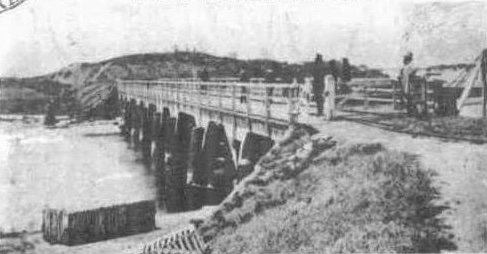 |
| Picture of a bridge over the Moyne at Port Fairy when it was called Belfast, VIC. Australasian (Melbourne, Vic. : 1864 - 1946) |
 |
| Sailors in a lifeboat, Port Fairy, Vic, between 1870 and 1890. P.D. |
Miss E. F. Mills, of Trafalgar wrote:
"My grandfather, Charles Frederick Mills, and John
Brabyn Mills, his brother, were sealing at
Portland in 1826. They built the huts
in which Captain William Dutton lived.
At a later date, my grandmother accompanied
him to the mainland, and one of
her memories was of the beautiful wild-
flowers she picked up at Portland before the
arrival of the Hentys. My grandmother
told me her husband and her brother-in
law engaged in farming on the mainland
for years." Some of the master whalers
were in the habit of grazing stock on the
mainland during the whaling season. John
Griffiths, the whaling master at Port Fairy,
according to Stephen Henty, was ruined by
losses of stock at the westward harbours."
Brabyn Mills, his brother, were sealing at
Portland in 1826. They built the huts
in which Captain William Dutton lived.
At a later date, my grandmother accompanied
him to the mainland, and one of
her memories was of the beautiful wild-
flowers she picked up at Portland before the
arrival of the Hentys. My grandmother
told me her husband and her brother-in
law engaged in farming on the mainland
for years." Some of the master whalers
were in the habit of grazing stock on the
mainland during the whaling season. John
Griffiths, the whaling master at Port Fairy,
according to Stephen Henty, was ruined by
losses of stock at the westward harbours."
Portland Guardian (Vic. : 1876 - 1953)
 |
| Star of the west Hotel Port Fairy, Victoria, early 1900s Aussie Mobs |
 |
| Goldie's farm at Port Fairy, VIC, Leader (Melbourne, Vic. : 1862 - 1918, 1935), Saturday 8 June 1901, |
 |
| Port Fairy, VIC, Australasian (Melbourne, Vic. : 1864 - 1946), Saturday 30 January 1904 |
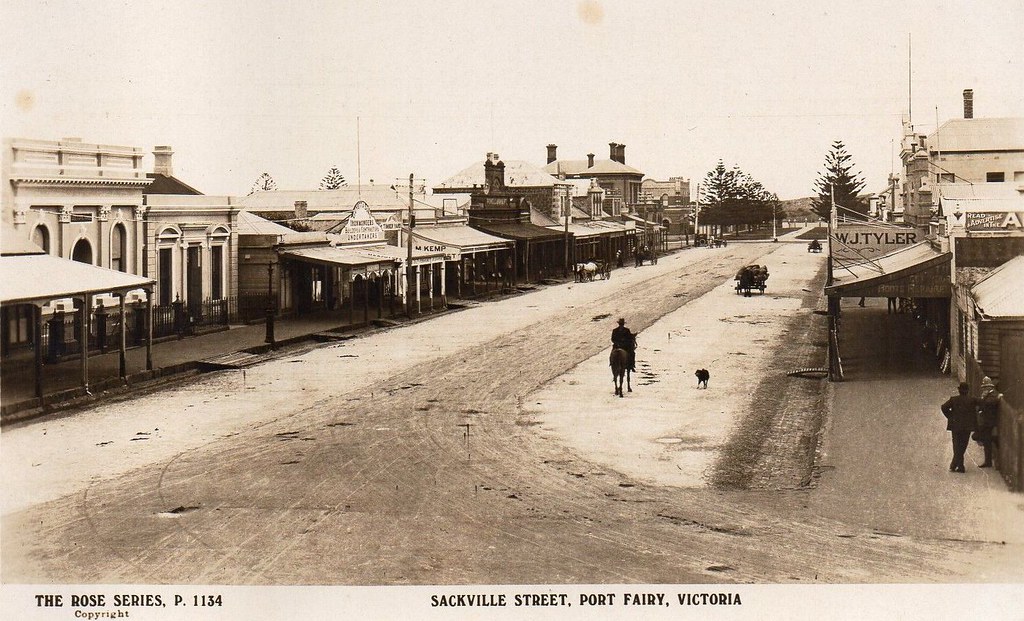 |
| Sackville Street, Port Fairy, Victoria - early 1900s. Aussie Mobs |
 |
| The Port Fairy Show, VIC, Weekly Times (Melbourne, Vic. : 1869 - 1954), Saturday 28 November 1914 |
 |
TROOPER L. G. FINN (8th Light Horse), of Port Fairy, VIC, who died at the Dardanelles. Advocate (Melbourne, Vic. : 1868 - 1954), Saturday 11 September 1915 |
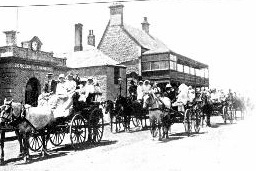 |
| Port Fairy, WA, Weekly Times (Melbourne, Vic. : 1869 - 1954), Saturday 6 February 1915 |
 |
| Douglas House Private Hotel. Port fairy, circa 1918 Kaye |
 |
| Looking towards the island, Port Fairy, Victoria. n.d. P.D. |
1920s
1930s
1940s and WWII
 |
| The beach pavilion at Port Fairy, circa 1920, State Library of Victoria |
 |
| Welcome back celebrations for Port Fairy, VIC, Weekly Times (Melbourne, Vic. : 1869 - 1954), Saturday 2 April 1927 |
 |
| Fishermen packing Barracouta at Port fairy, NSW, Weekly Times (Melbourne, Vic. : 1869 - 1954), Saturday 3 August 1929 |
 |
| Delivering milk at Galaxo factory, Port Fairy, VIC, Weekly Times (Melbourne, Vic. : 1869 - 1954), Saturday 3 August 1929 |
1930s
 |
| Port Fairy, VIC, 1920-30s |
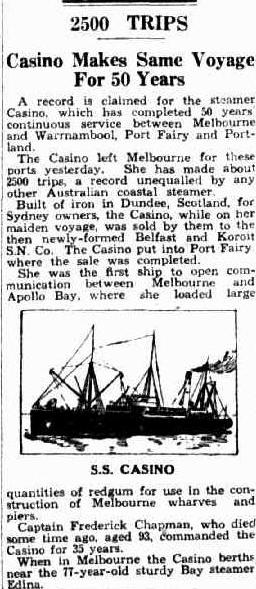 |
| Herald (Melbourne, Vic. : 1861 - 1954), Wednesday 3 February 1932 |
 |
| Port Fairy, VIC, Weekly Times (Melbourne, Vic. : 1869 - 1954), Saturday 23 March 1935 |
1940s and WWII
 |
| Weekly Times (Melbourne, Vic. : 1869 - 1954), Wednesday 25 November 1942 |
 |
| Douglas House in Port Fairy, Victoria - 1940s, Aussie~mobs |
 |
| Weekly Times (Melbourne, Vic. : 1869 - 1954), Wednesday 17 July 1946 |
 |
| Employees of The Port fairy Textile factory Weekly Times (Melbourne, Vic. : 1869 - 1954), Wednesday 17 July 1946 |
 |
| The Belfast and Koroit Steam Navigation Company was located at Port fairy. Their headquarters were situated at 37 Gipps Street on the wharf. State Library of Victoria |
 |
| THE "DINKUM AUSSIE" OF THE PORT FAIRY TRIBE, VICTORIA. JIMMY MAJOR, Standard (Frankston, Vic. : 1939 - 1949), Thursday 3 October 1946 |
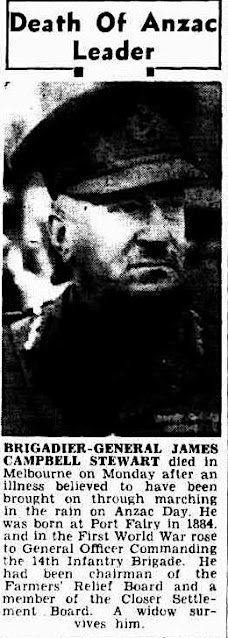 |
| James Campbell Stewart (1884-1947), soldier and public servant, was born on 19 January 1884 at Belfast (Port Fairy), VictoriaWeekly Times (Melbourne, Vic. : 1869 - 1954), Wednesday 4 June 1947 |
1950s
 |
| Port Fairy team (Hampden League) Weekly Times (Melbourne, Vic. : 1869 - 1954), Wednesday 17 October 1951 |
 |
| Watching the ring events at the Port fairy Show, VIC, Weekly Times (Melbourne, Vic. : 1869 - 1954), Wednesday 21 November 1951 |
 |
| Sackville, Street, Port Fairy, VIC, Weekly Times (Melbourne, Vic. : 1869 - 1954), Wednesday 11 June 1952 |
1970s
1980s
Around Port Fairy
 |
| Port fairy, VIC, 1977, Matt W |
 |
| Sackville St, Port Fairy, VIC, 1979, Matt W |
 |
| Sackville St, Port Fairy, VIC, 1979, Matt W |
 |
| Commercial Hotel, Port Fairy, VIC, circa 1979, Matt W |
 |
| The earliest part of Mills Cottage, Port Fairy, VIC, dates back to c.1843, making it possibly one of Victoria’s oldest homes. Photo taken 1979, Matt W |
1980s
 |
| Port Fairy, Sackville St, VIC, eary 1980s, Matt W |
Around Port Fairy
 |
| Battery Hill fortifications, at Port fairy were built by the Public Works Department in 1886-87 |
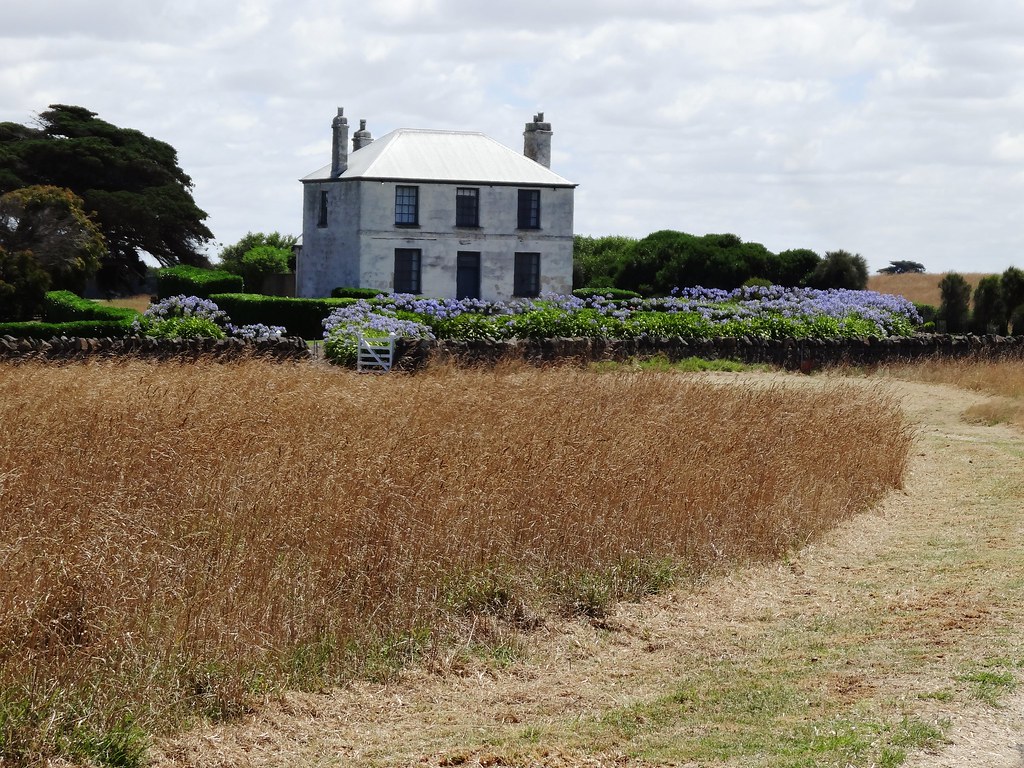 |
| Woodbine House, Port fairy, circa 1847. Denisbin |
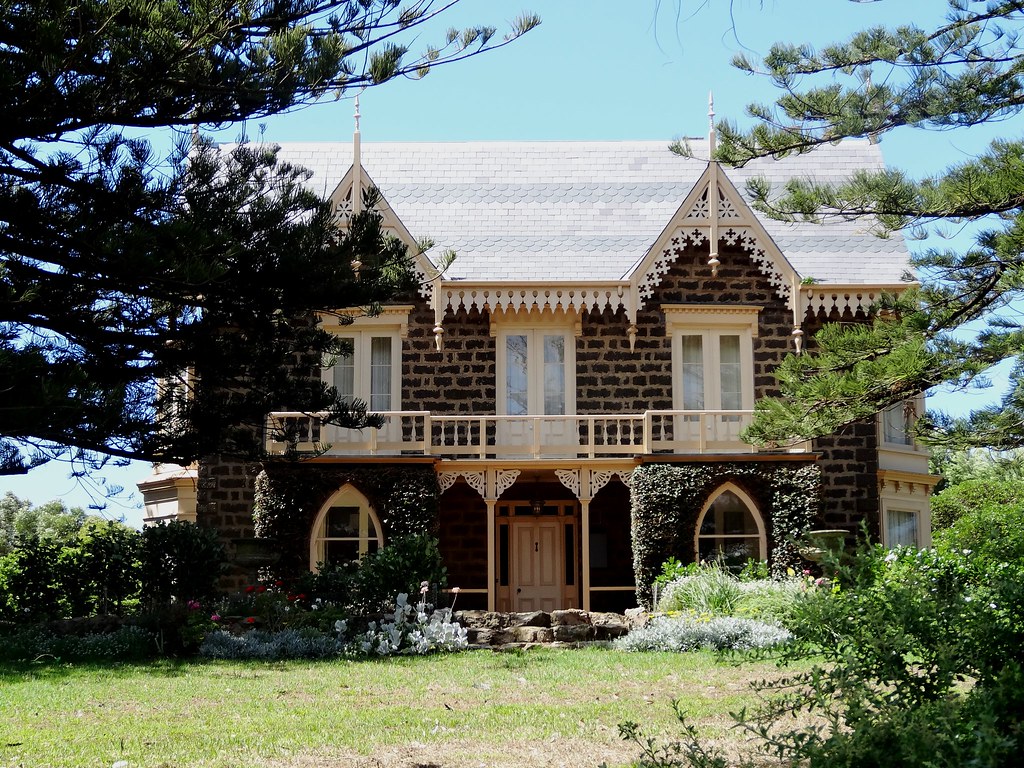 |
| Talara House, Port Fairy, circa 1855. Denisbin Dilmond John Howes built this in 1857. Cost 440 pounds to build and sold in 1878 for 215 pounds |
 |
| Anglican Church, Port Fairy, circa 1856. Denisbin |
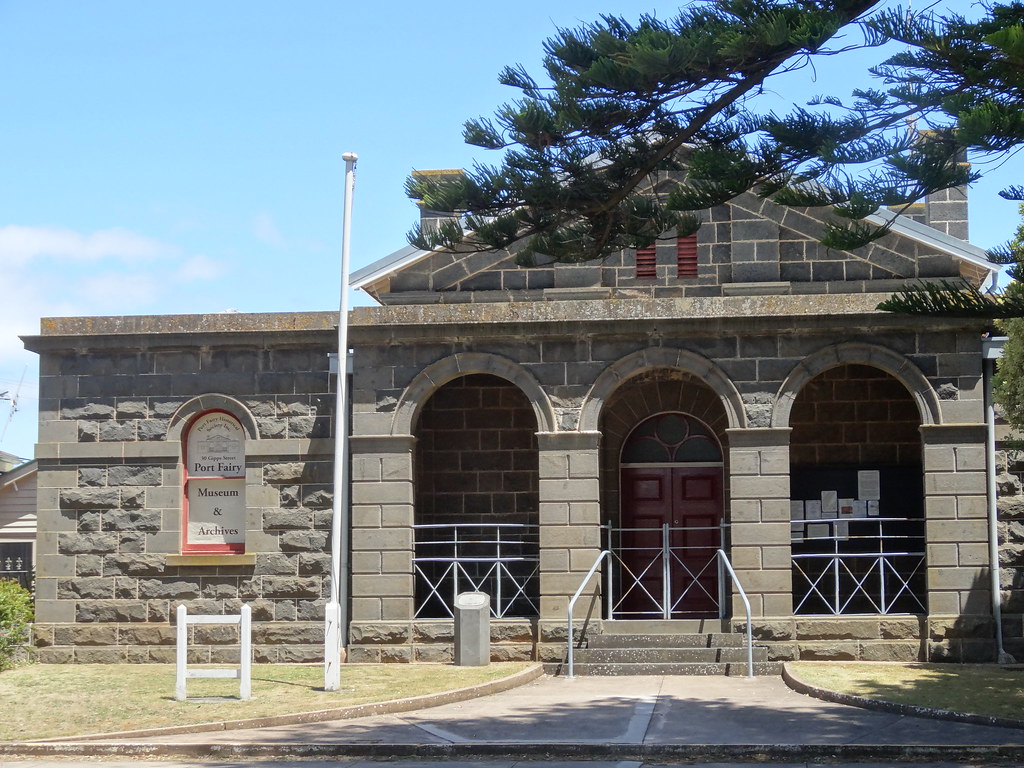 |
| Court Fairy Courthouse, circa 1860. Denisbin |
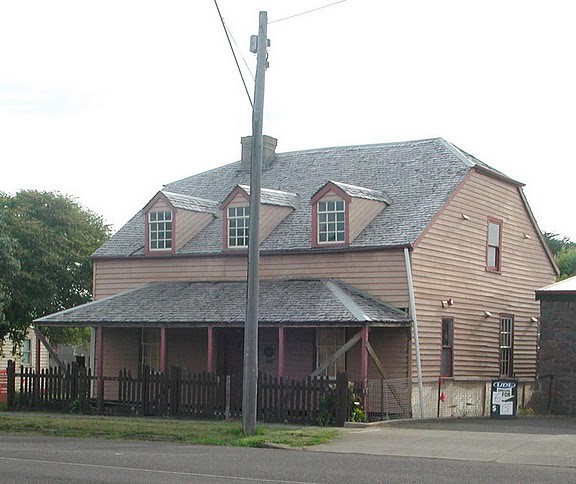 |
| Steam Packet Inn in historic Port Fairy Victoria, circa 1842. Denisbin |
 |
| Mott's Cottage was constructed in three stages, the oldest section dates from 1850 or earlier |
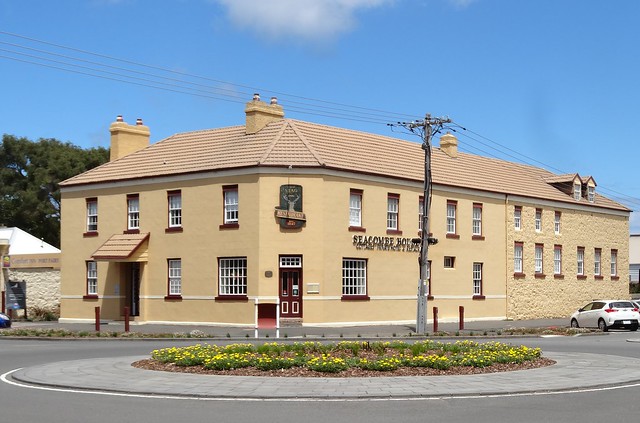 |
| The old Stag Inn hotel built in 1847. Denisbin, built by Captain John Sanders |
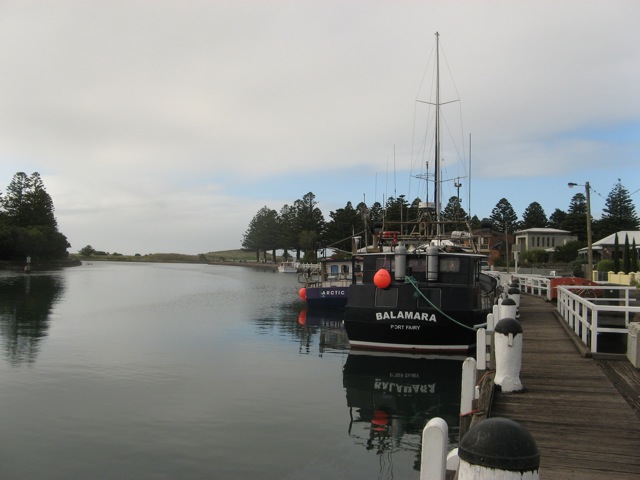 |
| Harbour at Port Fairy - Victoria, Peter Barber |
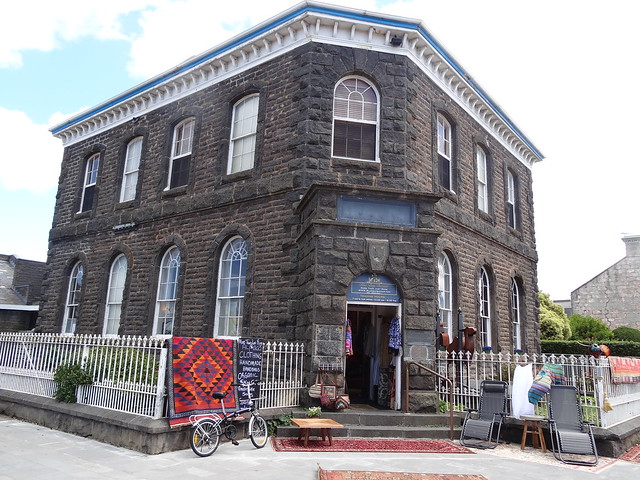 |
| The Australasian Bank built in 1857, Port Fairy, Denisbin |
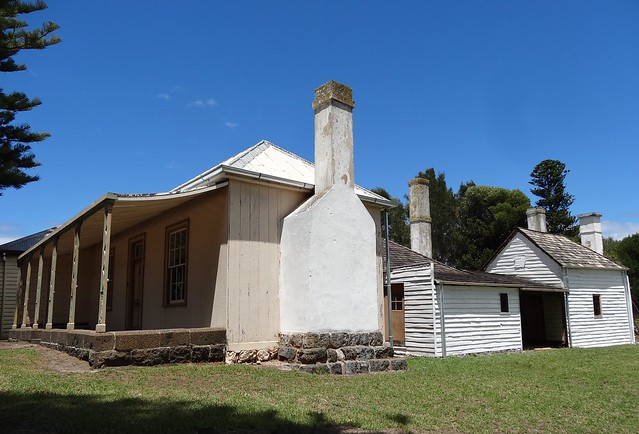 |
| Captain John Mills Cottage. The rear wooden part built around 1843. Denisbin |
.jpg) |
| Griffiths Island Lighthouse, Port Fairy, circa 1859 |
 |
| The Old Mill House. Former Joseph Goble's Flour Mill, circa1864 |
 |
| Historic stone cottage, Port fairy, Victoria |
| Star Of The West Hotel Built 1856, was owned by a Mr Thompson in 1905 |
 |
| Emoh is a single storey stone residence of six principal rooms, part dating from as early as 1849, but mostly from the early 1850s |
 |
| Seafield : the timber section of the house probably dates from 1852 |
 |
| The Caledonian Inn, also known as The Stump. Port Fairy, Victoria. Victoria’s oldest licenced pub. Established 1844 |
 |
| Battery Hill, Port Fairy, VIC |
 |
| The Moyne River, Port Fairy, VIC |







